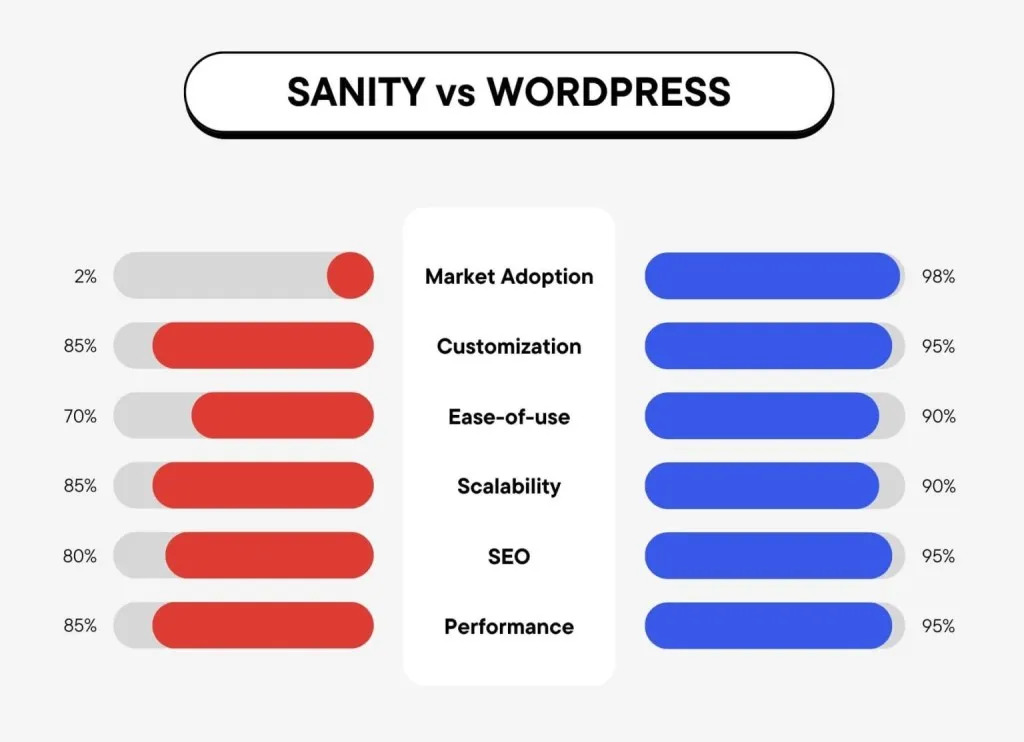What is Sanity
Sanity is a headless CMS that works by decoupling the back-end (content storage and management) from the front-end (content presentation). This approach allows developers and content creators to innovate without the constraints of conventional CMS architectures.
Key Features of Sanity
Sanity distinguishes itself with features designed to provide flexibility, scalability, and efficiency. Here are some of those features:
- Structured Content: Sanity empowers users to create rich content models with relationships and embedded media, providing a high degree of customization to reflect real-world data structures.
- Real-time Collaboration: Multiple users can edit the same document simultaneously, promoting teamwork and reducing the chance of content overwrites.
- API-first Approach: Content is accessed through APIs, making it easy to deliver experiences across web, mobile, and other digital platforms.
- Customizable Interface: The Sanity Studio is fully customizable, allowing businesses to tailor the environment to fit their specific needs and workflows.
- Scalability: Designed to handle large-scale projects, Sanity can grow with your business, accommodating increasing amounts of content and traffic.
Benefits of Using Sanity
Sanity offers few advantages for content management processes:
Flexibility
Sanity’s headless architecture offers unparalleled flexibility. Developers can choose any front-end technology to build websites or applications, which means they aren't locked into a specific frontend framework.
Enhanced Performance
With content delivered via APIs, Sanity ensures faster load times and improved performance, especially critical for high-traffic sites and applications.
Improved Workflow
Sanity's real-time collaboration and version control features simplify content creation and management. Teams can work together more efficiently, reducing errors and speeding up the content production cycle.
Sanity vs. WordPress
While Sanity offers compelling features for modern content management, it is essential to compare it with WordPress – the CMS leader well-known for its robustness and extensive plugin ecosystem.

Development Flexibility
- Sanity: Offers more flexibility for developers to use modern JavaScript frameworks due to its headless nature.
- WordPress: While it offers headless capabilities through the REST API, traditional WordPress is monolithic, making it more straightforward for less complex websites.
Customization and Plugins
- Sanity: Highly customizable but requires more development effort to achieve complex customizations compared to the out-of-the-box solutions available in WordPress.
- WordPress: Extensive repository of themes and plugins allows for quick and easy customization without needing advanced development skills.
Scalability and Performance
- Sanity: Scales naturally with the decoupled architecture and API-first approach.
- WordPress: Can scale but may require more meticulous planning and optimization, especially when complex themes and plugins are involved.
Content Management and Workflow
- Sanity: Advanced real-time collaboration and version control features designed for seamless teamwork.
- WordPress: Excellent for individual or smaller team content production, with collaborative features supported through plugins.
Conclusion
Sanity is a compelling choice for companies seeking to deliver structured content efficiently across multiple digital channels. However, it's important to weigh Sanity's benefits against WordPress's strengths. WordPress remains a dominant player due to its ease of use, extensive plugin ecosystem, and strong community support. It offers quick customization for less complex projects and is well-suited for smaller teams or those without advanced development skills.
Ultimately, the choice between Sanity and WordPress depends on your specific project needs, the expertise of your team, and the desired level of customization and scalability. Both platforms have their unique advantages, and careful consideration will ensure you select the CMS that best aligns with your enterprise goals.